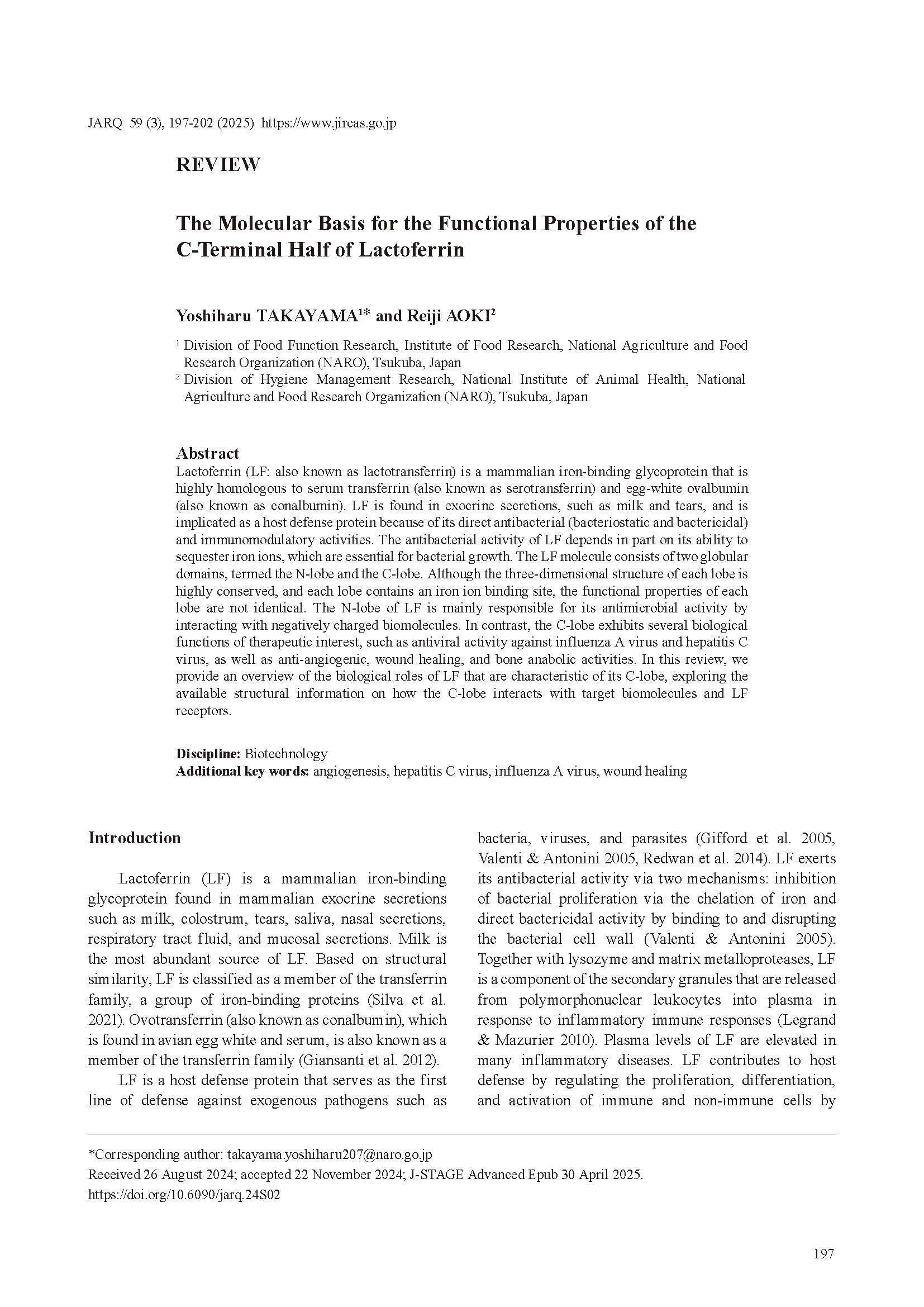The Molecular Basis for the Functional Properties of the C-Terminal Half of Lactoferrin
Japan Agricultural Research Quarterly
| ISSN | 00213551 |
|---|---|
| NII recode ID (NCID) | AA0068709X |

Full text
jarq59-3_197-202.pdf1.61 MB
Lactoferrin (LF: also known as lactotransferrin) is a mammalian iron-binding glycoprotein that is highly homologous to serum transferrin (also known as serotransferrin) and egg-white ovalbumin (also known as conalbumin). LF is found in exocrine secretions, such as milk and tears, and is implicated as a host defense protein because of its direct antibacterial (bacteriostatic and bactericidal) and immunomodulatory activities. The antibacterial activity of LF depends in part on its ability to sequester iron ions, which are essential for bacterial growth. The LF molecule consists of two globular domains, termed the N-lobe and the C-lobe. Although the three-dimensional structure of each lobe is highly conserved, and each lobe contains an iron ion binding site, the functional properties of each lobe are not identical. The N-lobe of LF is mainly responsible for its antimicrobial activity by interacting with negatively charged biomolecules. In contrast, the C-lobe exhibits several biological functions of therapeutic interest, such as antiviral activity against influenza A virus and hepatitis C virus, as well as anti-angiogenic, wound healing, and bone anabolic activities. In this review, we provide an overview of the biological roles of LF that are characteristic of its C-lobe, exploring the available structural information on how the C-lobe interacts with target biomolecules and LF receptors.
| Date of issued | |
|---|---|
| Creator | Yoshiharu TAKAYAMA Reiji AOKI |
| Subject | angiogenesis hepatitis C virus influenza A virus wound healing |
| Publisher | Japan International Research Center for Agricultural Sciences |
| Received Date | 2024-08-26 |
| Accepted Date | 2024-11-22 |
| Available Online | |
| Volume | 59 |
| Issue | 3 |
| spage | 197 |
| epage | 202 |
| DOI | 10.6090/jarq.24S02 |
| Language | eng |
